A Solidified Controllable Resin System Suitable for Fracture Cavity Formation Plugging and Its Performance Characterization
Abstract
:1. Introduction
2. Results and Discussion
2.1. Research and Development of the Resin Gel Plugging System
2.1.1. Resin Matrix Optimization
2.1.2. Preparation of Water-Soluble Resin
2.1.3. Curing Agent Optimization
2.1.4. Research and Development of Resin Plugging Materials
2.1.5. Preparation of the Rheology Modifier
2.1.6. Filling Material Optimization
2.2. Performance of the Resin Gel Plugging System
2.2.1. Rheological Properties of the Resin Gel Plugging System
2.2.2. Influence of Drilling Fluid Contamination on the Curing Effect of the Resin Gel System
2.2.3. Evaluation of the Thickening Performance of the Resin Gel Plugging System
2.2.4. Evaluation of the Pressure-Bearing Plugging Performance of the Resin Gel Plugging System
3. Conclusions
- (1)
- In this paper, a resin plugging system based on urea–formaldehyde resin was prepared for plugging formation cracks. Using curing strength and curing time as the main indexes, the additive amount and types of various materials in the resin plugging system were optimized.
- (2)
- The optimal ratio of latent curing agent combination is p-methylbenzenesulfonic acid: hexamethylenetetramine: diethanolamine: ammonium persulfate ratio = 1:1:1:2. The flow pattern regulator is a combination of Li2CO3 and H2C2O4 (m(Li2CO3):m(H2C2O4) = 0.8). The filling material is a combination of 3% nano-silica, 4% walnut shell, and 3% quartz sand, and the final formula of the system is: 20% urea formaldehyde resin + 1% rheological regulator + 3% curing agent + 10% filling material. The density is 1.11 g/cm3.
- (3)
- The resin gel plugging system has good fluidity and pumpability, the initial viscosity is between 300–400 mPa·s, the viscosity gradually decreases with the increase in shear rate, and the apparent viscosity has good long-term stability at room temperature, and has the potential for field application.
- (4)
- The resin gel plugging system has good anti-pollution and anti-dilution ability, and the curing strength can still be greater than 4 MPa at high temperature after the pollution of KCL polysulfonate drilling fluid.
- (5)
- The resin gel leakage plugging system showed good plugging ability. The wedge crack with the inlet size of 7 mm and outlet size of 5 mm was plugged at a constant pressure of 12.84 MPa for 10 min without leakage; the sand filling pipe (diameter of 3.8 cm and pipe length of 30 cm) connected to the outlet 6 mm pipeline was plugged at a constant pressure of 10.73 MPa for 8 min and broke through. It indicates that it has good sealing ability.
4. Materials and Methods
4.1. Experimental Materials
4.2. Experimental Methods
4.2.1. Rheology
4.2.2. Microstructural Characterization
4.2.3. Sedimentation Test
4.2.4. Compressive Strength
4.2.5. Contamination Resistance
4.2.6. Plugging Performance
Author Contributions
Funding
Institutional Review Board Statement
Informed Consent Statement
Data Availability Statement
Conflicts of Interest
References
- Sterling Mora, G.G.; Moreno, R.B.Z.L. Rheology and statistical optimization of a shear-sensitive fluid as a treatment for circulation loss control. J. Pet. Sci. Eng. 2021, 205, 108830. [Google Scholar] [CrossRef]
- Hamza, A.; Shamlooh, M.; Hussein, I.A.; Nasser, M.; Salehi, S. Polymeric formulations used for loss circulation materials and wellbore strengthening applications in oil and gas wells: A review. J. Pet. Sci. Eng. 2019, 180, 197–214. [Google Scholar] [CrossRef]
- Magzoub, M.I.; Salehi, S.; Hussein, I.A.; Nasser, M.S. Loss circulation in drilling and well construction: The significance of applications of crosslinked polymers in wellbore strengthening: A review. J. Pet. Sci. Eng. 2020, 185, 106653. [Google Scholar] [CrossRef]
- Cui, K.-X.; Jiang, G.-C.; Yang, L.-L.; Deng, Z.-Q.; Zhou, L. Preparation and properties of magnesium oxysulfate cement and its application as lost circulation materials. Pet. Sci. 2021, 18, 1492–1506. [Google Scholar] [CrossRef]
- Zhang, W.; Shen, H.; Wang, Y.; Dong, Y. Grafting lignite with sulformethal phenoldehy resin and their performance in controlling rheological and filtration properties of water–bentonite suspensions at high temperatures. J. Pet. Sci. Eng. 2016, 144, 84–90. [Google Scholar] [CrossRef]
- Guo, C.; Jiang, G.; Guan, J.; Huang, S.; Guo, Y.; He, Y.; Yang, L.; Dong, T. Preparation and performance evaluation of a thixotropic polymer gel for loss circulation control. Fuel 2024, 371, 132148. [Google Scholar] [CrossRef]
- Strelets, L.A.; Ilyin, S.O. Effect of enhanced oil recovery on the composition and rheological properties of heavy crude oil. J. Pet. Sci. Eng. 2021, 203, 108641. [Google Scholar] [CrossRef]
- Sun, J.; Bai, Y.; Cheng, R.; Lyu, K.; Liu, F.; Feng, J.; Lei, S.; Zhang, J.; Hao, H. Research progress and prospect of plugging technologies for fractured formation with severe lost circulation. Pet. Explor. Dev. 2021, 48, 732–743. [Google Scholar] [CrossRef]
- Taylor, D.L.; in het Panhuis, M. Self-Healing Hydrogels. Adv. Mater. 2016, 28, 9060–9093. [Google Scholar] [CrossRef]
- Shi, L.; Ding, P.; Wang, Y.; Zhang, Y.; Ossipov, D.; Hilborn, J. Self-Healing Polymeric Hydrogel Formed by Metal–Ligand Coordination Assembly: Design, Fabrication, and Biomedical Applications. Macromol. Rapid Commun. 2019, 40, 1800837. [Google Scholar] [CrossRef]
- de Andrade, A.R.; Borges, R.A.; Guilherme, H.C.M.; Pinto, J.C.; Nele, M. A new loss circulation control strategy combining a cross-linkable polymer and magnetic fluid. J. Pet. Sci. Eng. 2019, 180, 958–966. [Google Scholar] [CrossRef]
- Liu, C.; Morimoto, N.; Jiang, L.; Kawahara, S.; Noritomi, T.; Yokoyama, H.; Mayumi, K.; Ito, K. Tough hydrogels with rapid self-reinforcement. Science 2021, 372, 1078–1081. [Google Scholar] [CrossRef] [PubMed]
- Yang, H.; Lv, Z.; Wang, L.; Feng, C.; Wang, J.; Xu, Z.; Huang, Y.; Li, Z.; Kang, W. Stability mechanism of controlled acid-resistant hydrophobic polymer nanospheres on CO2 foam. Fuel 2023, 346, 128332. [Google Scholar] [CrossRef]
- Zhang, Z.; Liu, H.; Ban, X.; Liu, X.; Guo, Y.; Sun, J.; Liu, Y.; Zhang, S.; Lei, J. Thermosetting resin modified asphalt: A comprehensive review. J. Traffic Transp. Eng. 2023, 10, 1001–1036. [Google Scholar] [CrossRef]
- Zhao, G.; You, Q.; Tao, J.; Gu, C.; Aziz, H.; Ma, L.; Dai, C. Preparation and application of a novel phenolic resin dispersed particle gel for in-depth profile control in low permeability reservoirs. J. Pet. Sci. Eng. 2018, 161, 703–714. [Google Scholar] [CrossRef]
- Bayomi, R.A.H.; Chu, C.-W.; Obayashi, K.; Ando, Y.; Cheng, C.-H.; Takahara, A.; Kojio, K. Influences of amine/epoxide ratio on cross-linking structure and mechanical properties of cured hydrogenated epoxy resin sheets and single-lap joints. Polymer 2024, 298, 126882. [Google Scholar] [CrossRef]
- Tian, Z.; Yang, X.; Duan, G.; He, S.; Han, X.; Yang, H.; Jian, S.; Hu, J.; Huang, Y.; Han, J.; et al. Phenolic resin filled wood-derived hierarchically porous carbon monolith for high areal capacitance supercapacitors. Ind. Crop. Prod. 2024, 218, 118990. [Google Scholar] [CrossRef]
- Wang, W.; Xu, Y.; Ge, J.; Guo, H.; Wu, Q.; Mao, Y. Phenolic resin gel suitable for medium-temperature and high-salinity reservoirs. J. Mol. Liq. 2022, 364, 119887. [Google Scholar] [CrossRef]
- Qi, G.; Zhang, Y.; Feng, G.; Pang, Y.; Yan, H. Linear polyborosiloxane for improving the flame-retardancy of cyanate ester resin. Mater. Chem. Phys. 2024, 320, 129454. [Google Scholar] [CrossRef]
- Wei, G.; Liu, H.; Zhou, Y.; Sun, J.; Luo, J.; Miao, J.-T.; Liu, R. Solvent-free high-performance insulating coatings from photocurable polyimide resin for electronic circuit boards. Prog. Org. Coat. 2024, 189, 108260. [Google Scholar] [CrossRef]
- Strachota, B.; Morand, A.; Dybal, J.; Matějka, L. Control of Gelation and Properties of Reversible Diels–Alder Networks: Design of a Self-Healing Network. Polymers 2019, 11, 930. [Google Scholar] [CrossRef] [PubMed]
- Zheng, Y.; Li, J.; Peng, Z.; Feng, Q.; Lou, Y. Study on the properties of urea-formaldehyde resin in repairing microcracks of cement stone in oil well under CO2 acid environment. React. Funct. Polym. 2023, 191, 105688. [Google Scholar] [CrossRef]
- Li, X.K.; Zhang, A.P.; Bian, J.; Ni, K.Y.; Zhao, W.; Yang, K.C.; Lin, H.L.; Chen, D.Q. Progress on the simulation, synthesis, processing and application of high performance thermosetting polybenzoxazine resin and its composites: A review. Prog. Org. Coat. 2024, 192, 108506. [Google Scholar] [CrossRef]
- Zhang, J.-P.; Zhang, F.-S. A new approach for blending waste plastics processing: Superabsorbent resin synthesis. J. Clean. Prod. 2018, 197, 501–510. [Google Scholar] [CrossRef]
- Yang, J.; Bai, Y.; Sun, J.; Lv, K.; Lang, Y. Recent advances of thermosetting resin and its application prospect in oil and gas drilling and production engineering. Geoenergy Sci. Eng. 2023, 230, 212222. [Google Scholar] [CrossRef]
- Sulthan, R.; Reghunadhan, A.; Sreenath, R.; Shankar, B.; Sambhudevan, S. Preparation, physicochemical analyses, and comparative evaluation studies of deep eutectic solvents (DES) from non-conventional precursor materials applied as catalytic curing agents for epoxy resin. J. Mol. Liq. 2024, 404, 124940. [Google Scholar] [CrossRef]
- Yang, J.; Bai, Y.; Sun, J.; Lv, K.; Han, J.; Dai, L. Experimental Study on Physicochemical Prop erties of a Shear Thixotropic Polymer Gel for Lost Circulation Control. Gels 2022, 8, 229. [Google Scholar] [CrossRef]
- Tang, X.; Zhou, B.; Chen, C.; Sarsenbekuly, B.; Yang, H.; Kang, W. Regulation of polymerizable modification degree of nano-SiO2 and the effects on performance of composite microsphere for conformance control. Colloids Surf. A Physicochem. Eng. Asp. 2020, 585, 124100. [Google Scholar] [CrossRef]
- Kang, W.; Zhang, H.; Lu, Y.; Yang, H.; Zhu, T.; Zhang, X.; Chen, C.; Sarsenbekuly, B.; Besembaevna, O.Z. Study on the enhanced viscosity mechanism of the cyclodextrin polymer and betaine-type amphiphilic polymer inclusion complex. J. Mol. Liq. 2019, 296, 111792. [Google Scholar] [CrossRef]
- Kang, W.; Shao, S.; Yang, H.; Chen, C.; Hou, X.; Huang, Z.; Zhao, H.; Aidarova, S.; Gabdullin, M. The effect of stepwise increasing of water injection rates on enhanced oil recovery after preformed particle gel treatment. J. Pet. Sci. Eng. 2019, 182, 106239. [Google Scholar] [CrossRef]
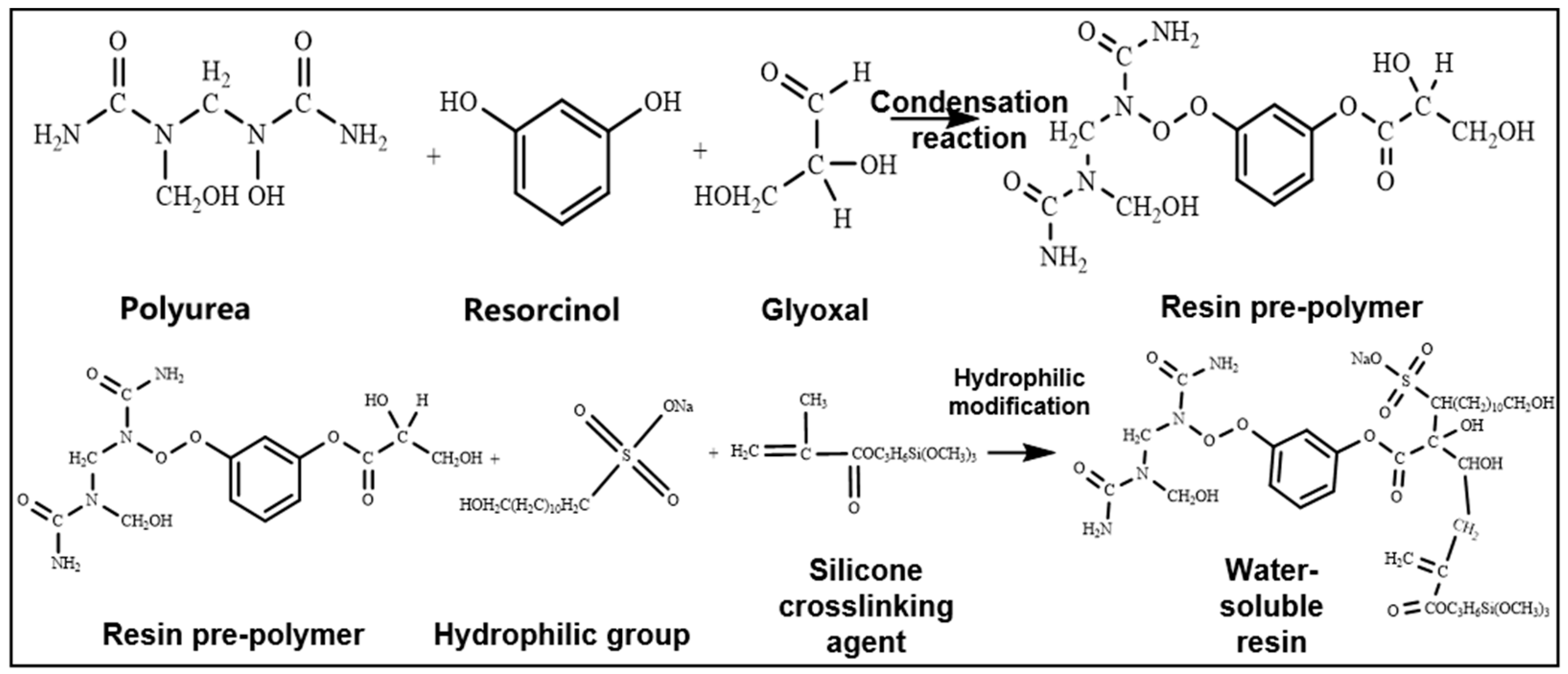

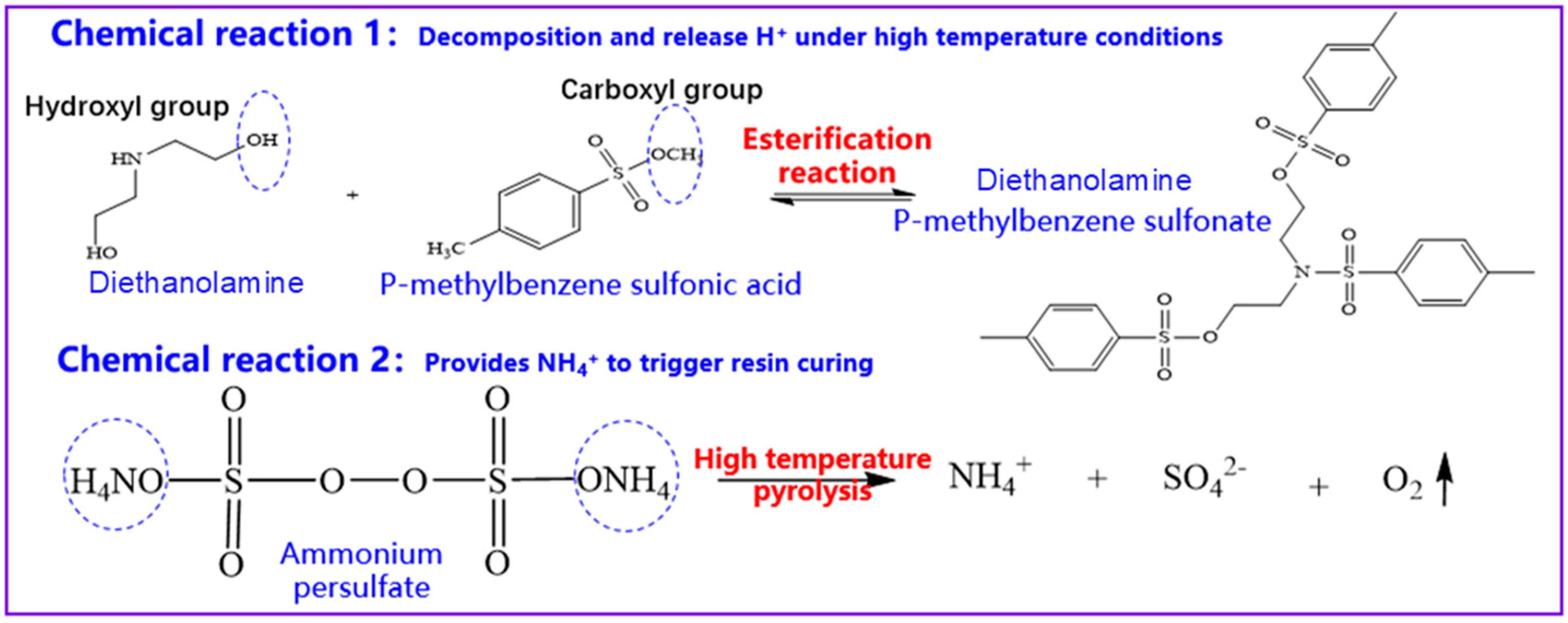
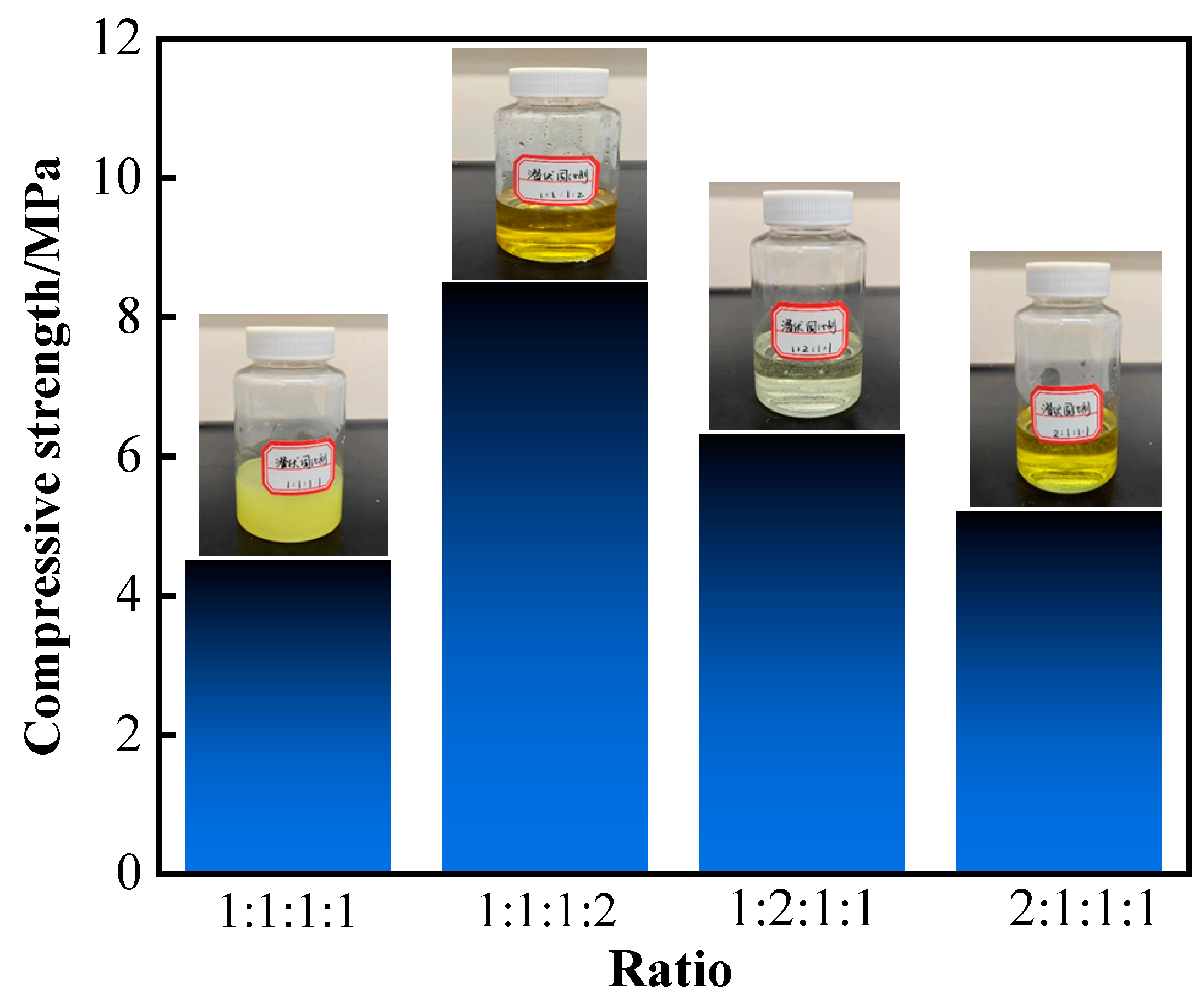

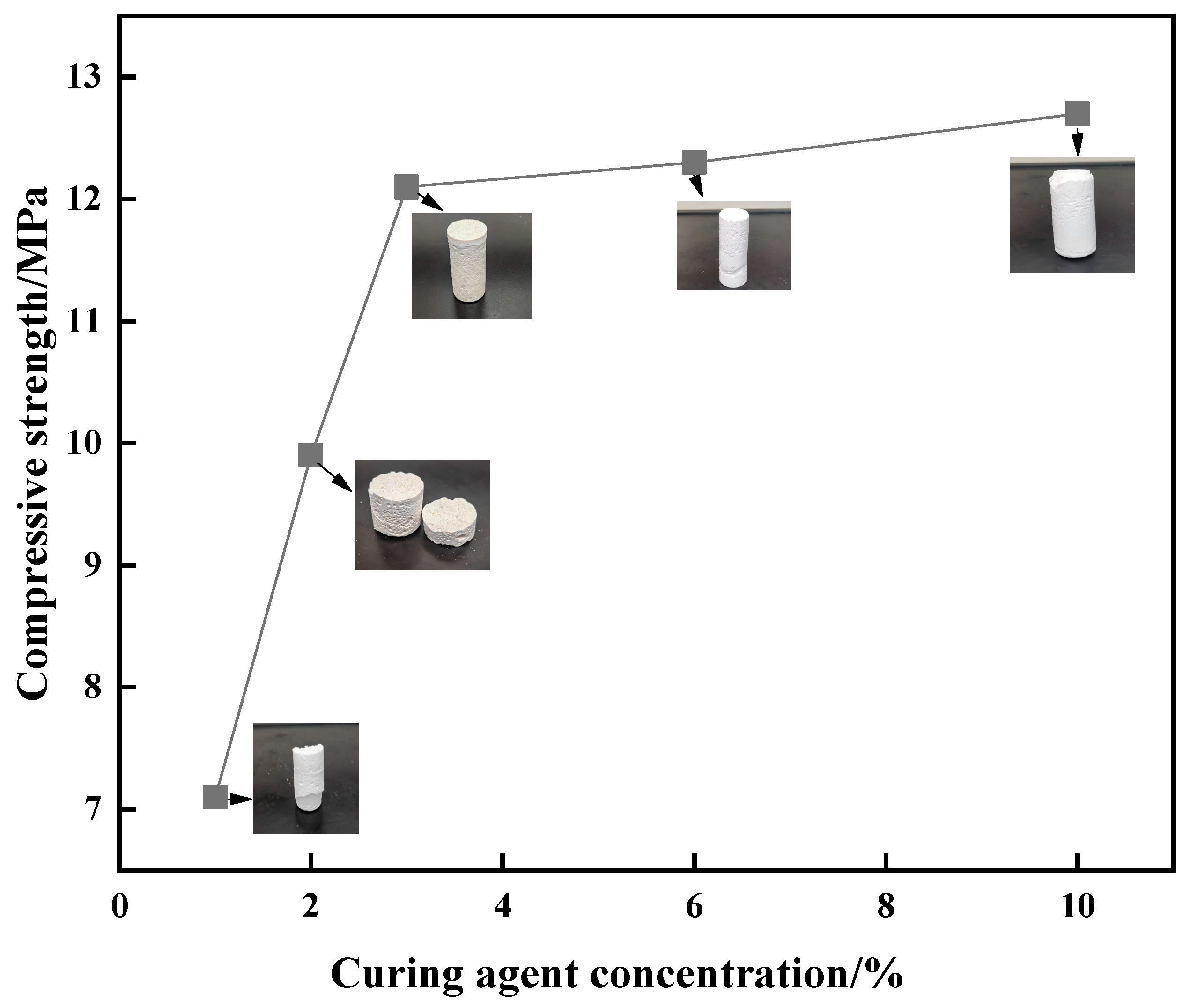
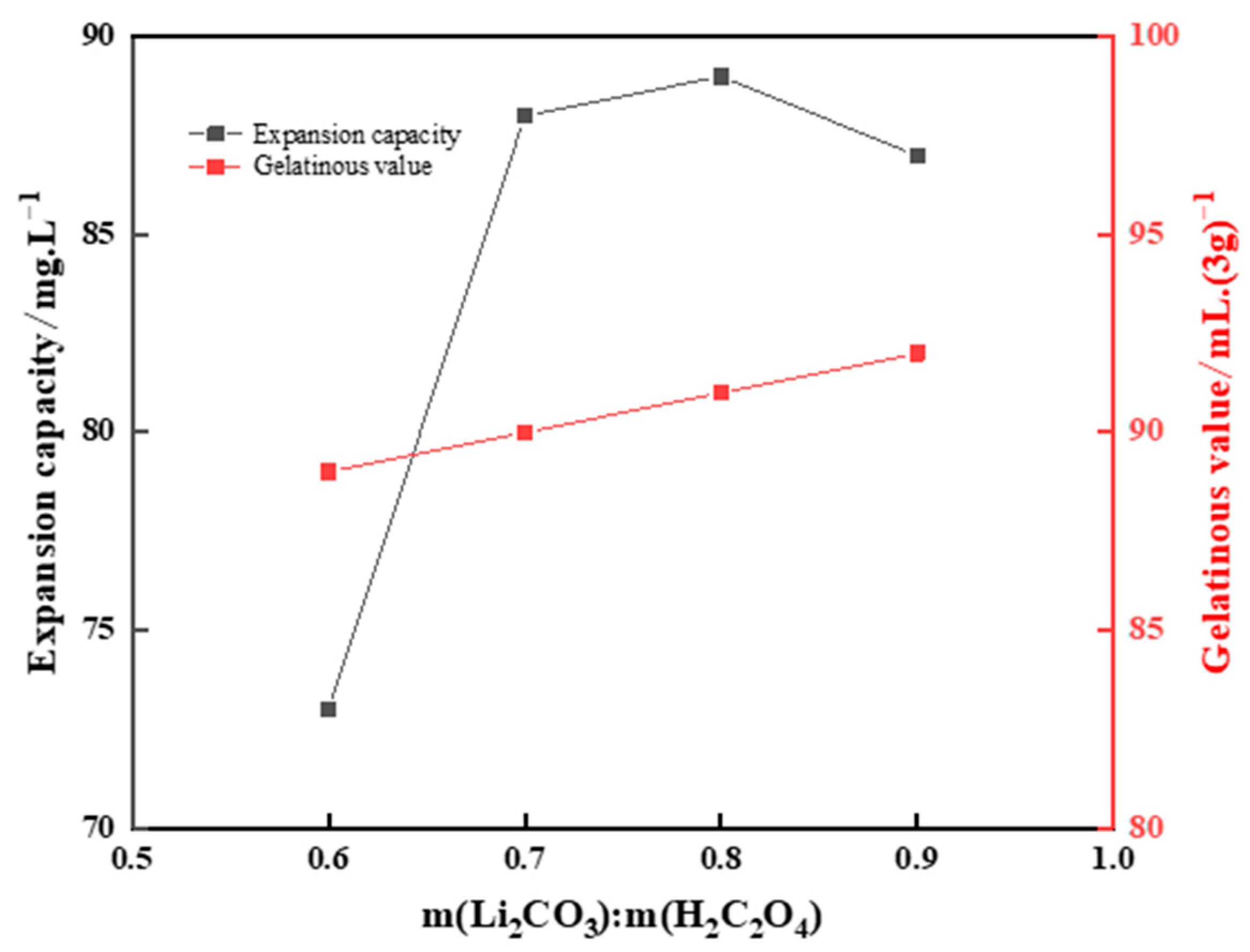


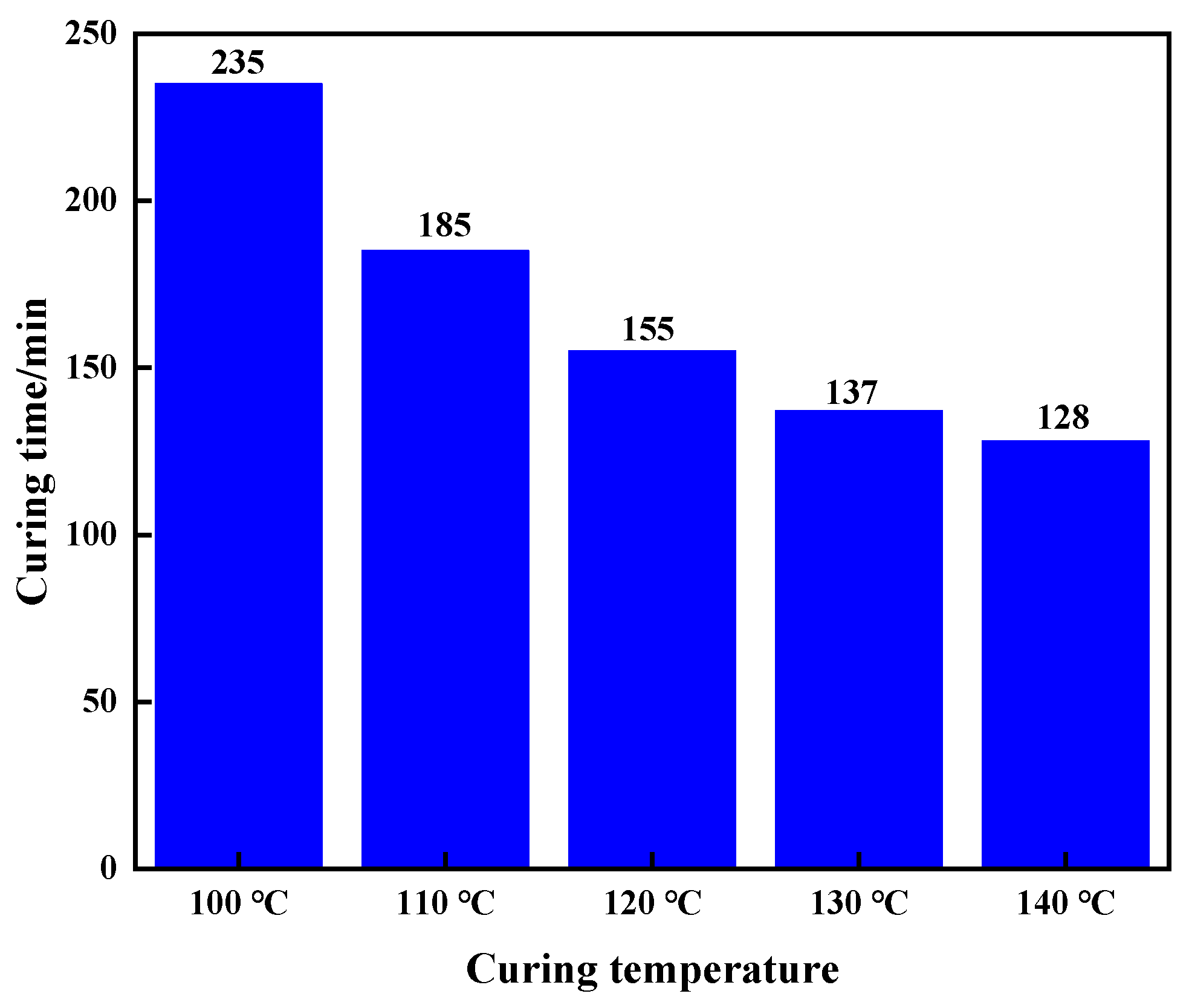
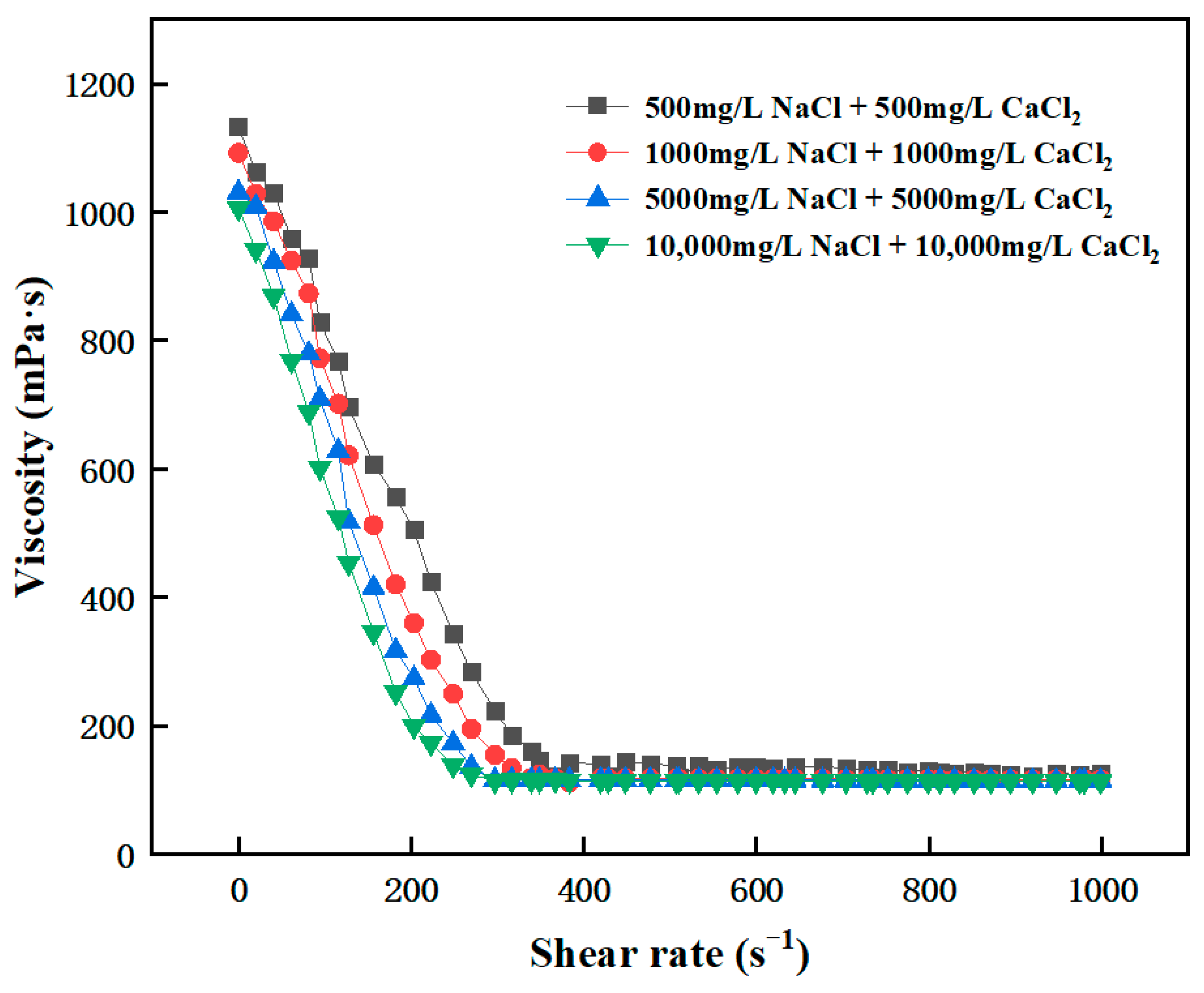
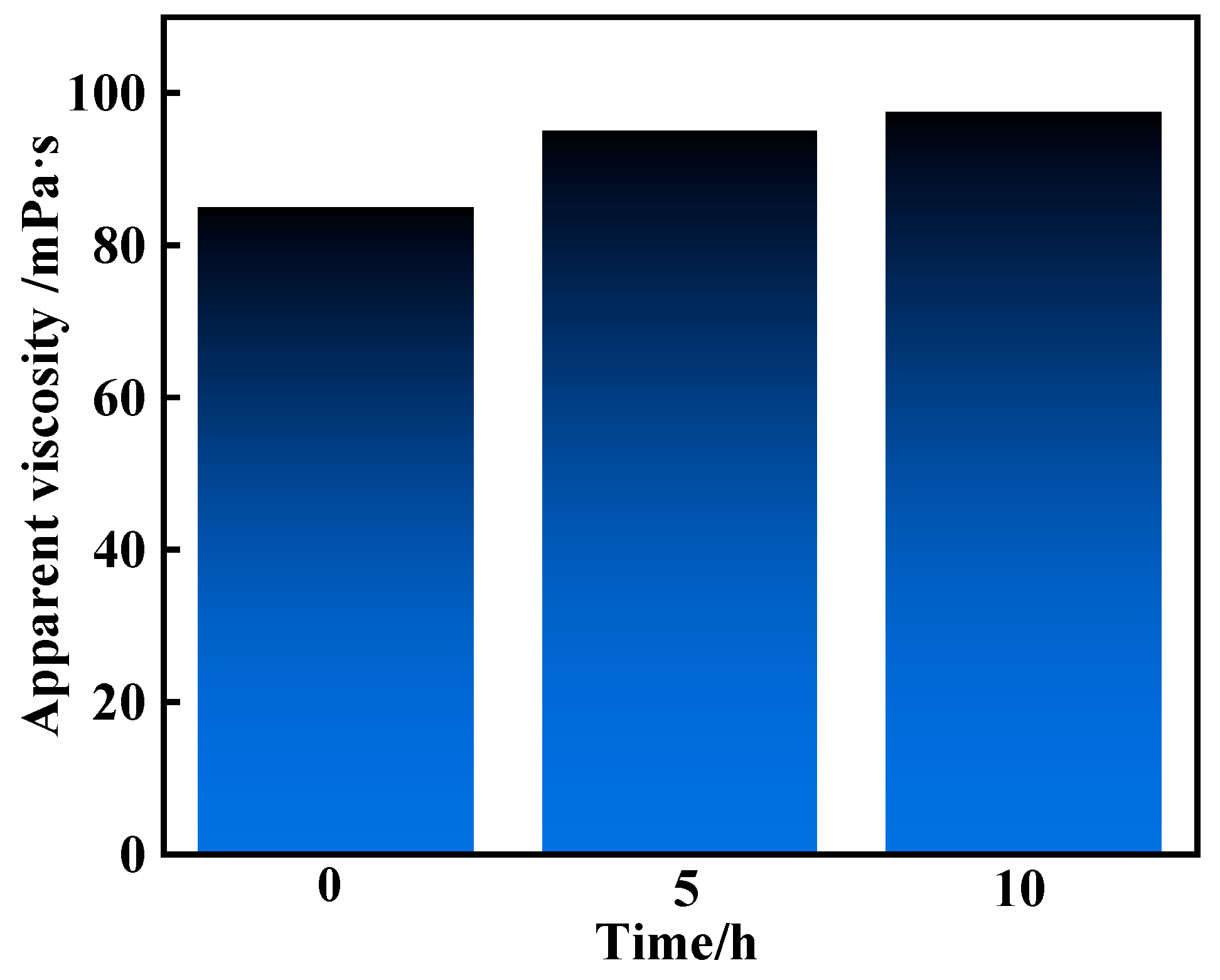
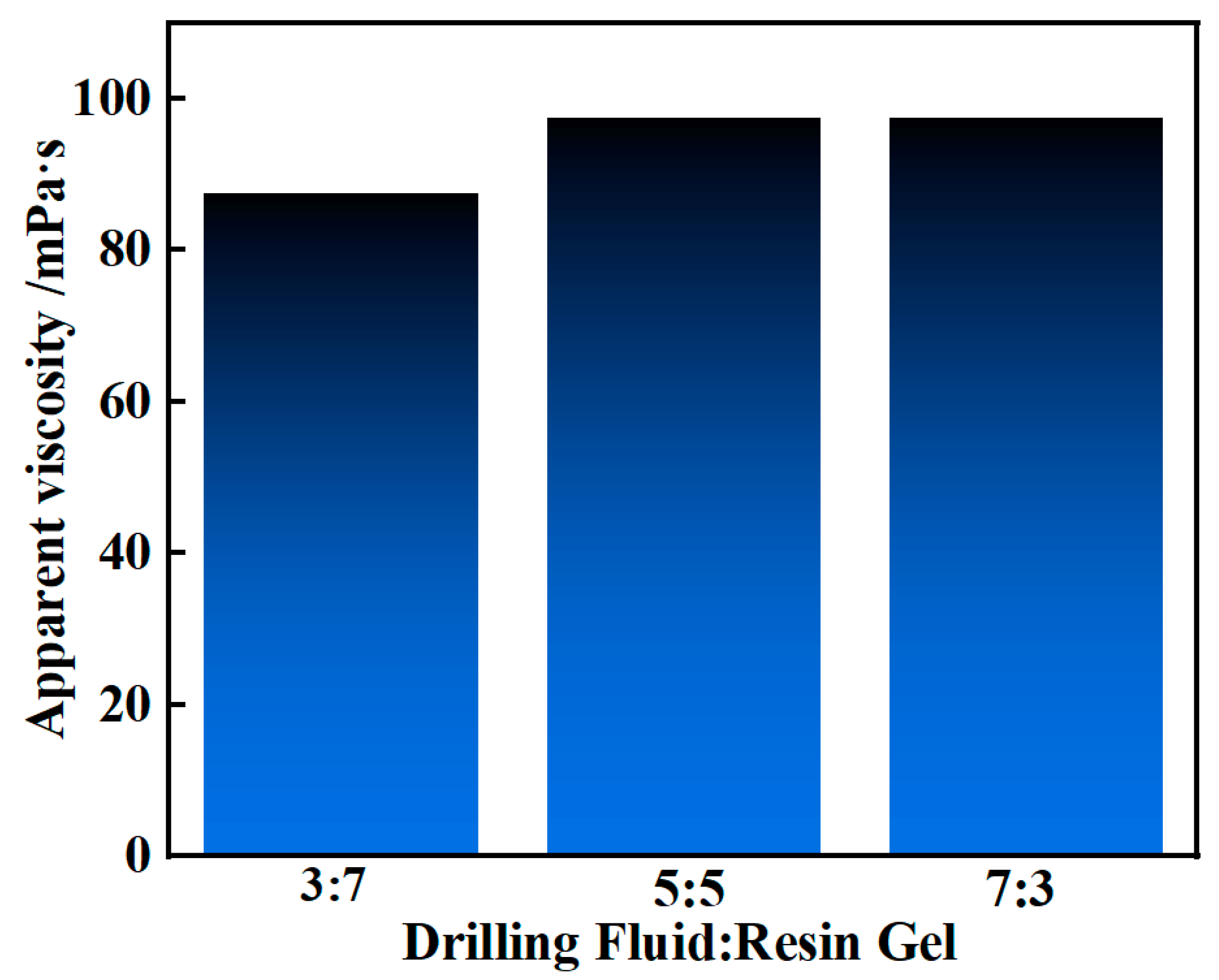


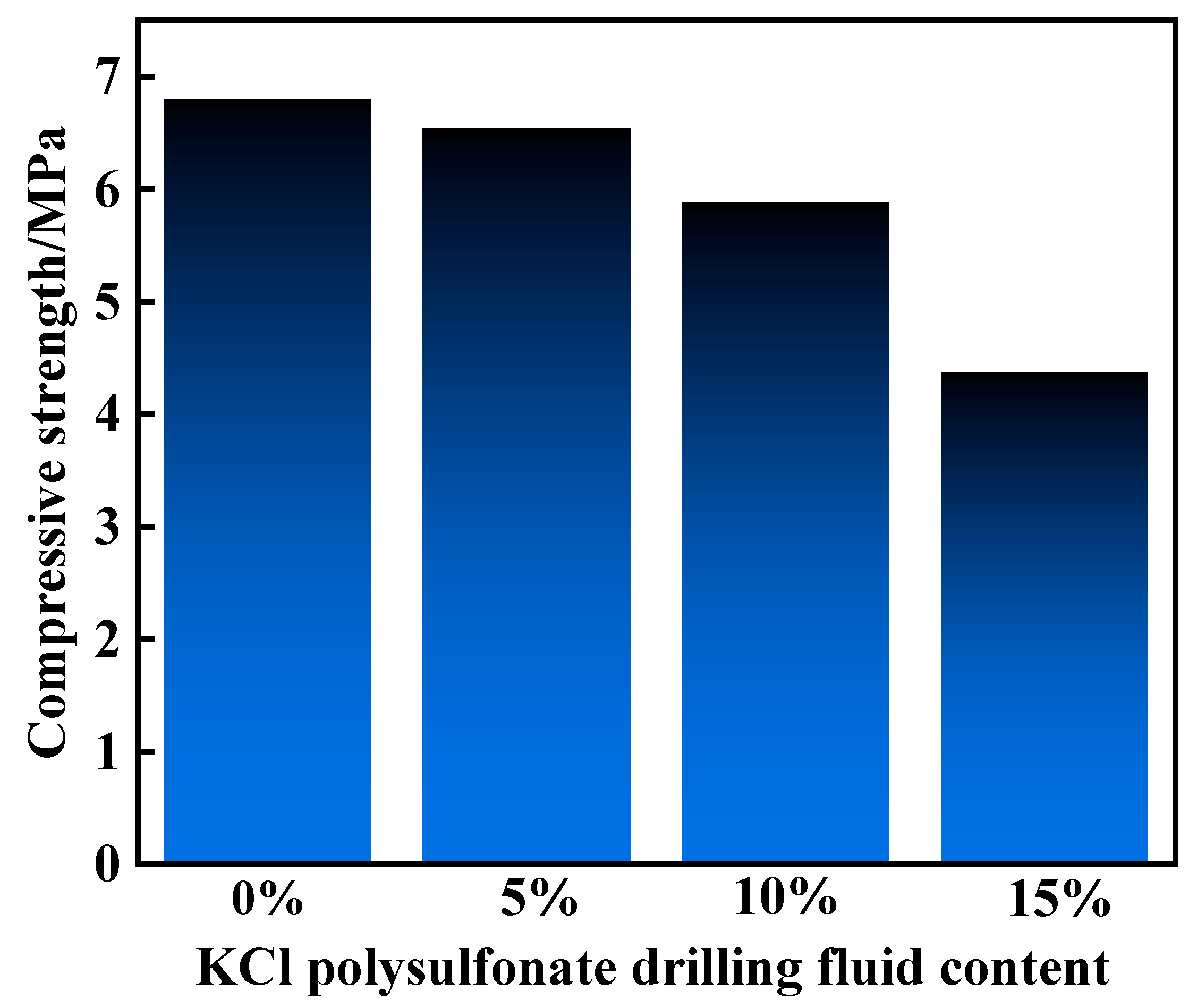

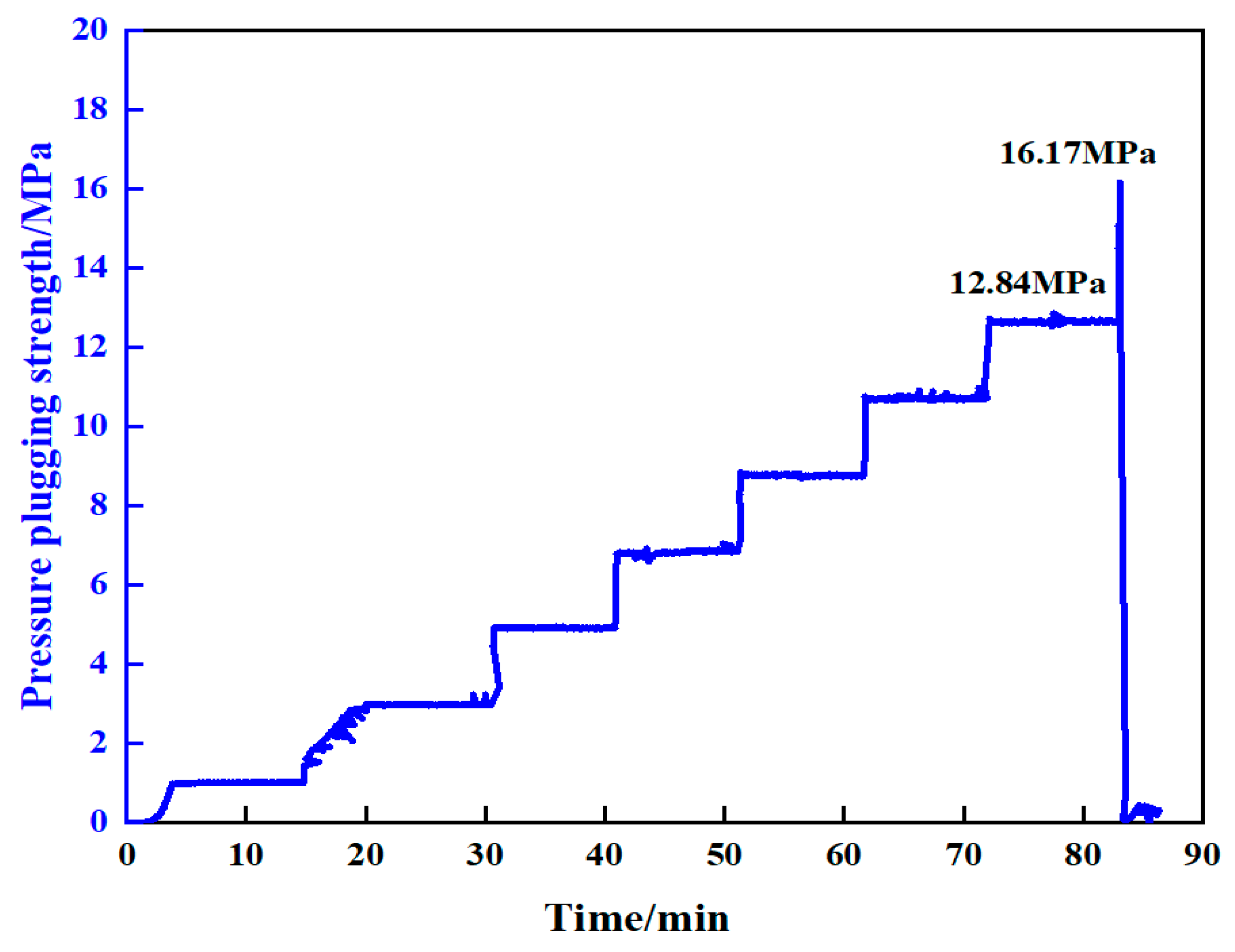
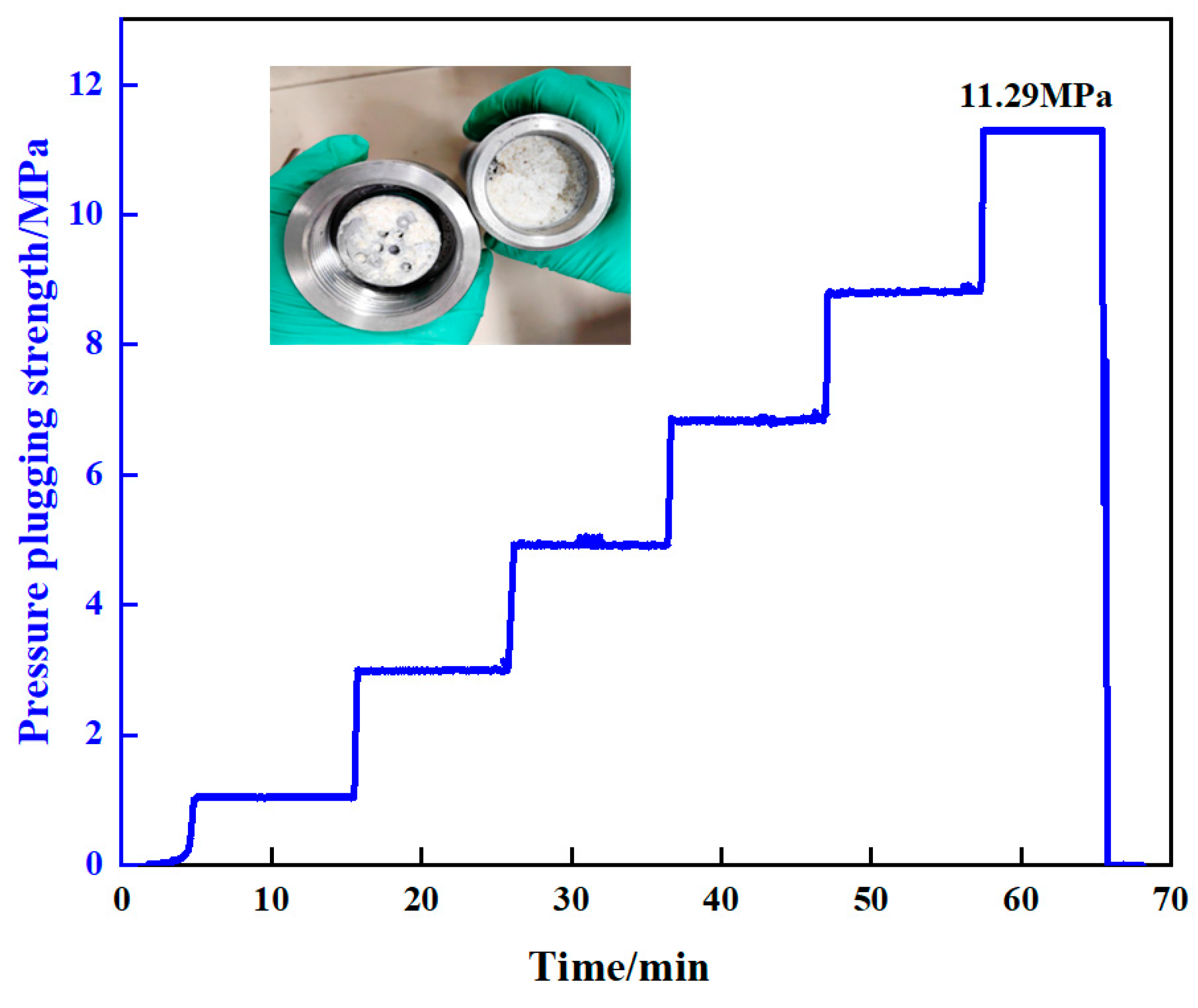
| Curing Time and Strength | 45 °C | 60 °C | 80 °C | 100 °C |
|---|---|---|---|---|
| Urea–formaldehyde resin | Uncured | 1 h, moderate strength | 2 h, high strength | 3.46 h, high strength |
| Phenolic resin | Uncured | Yellow emulsion | Light yellow liquid | Yellow liquid, aqueous |
| Epoxy resin | Uncured | Clear liquid with precipitation | Aqueous transparent liquid | Aqueous transparent liquid |
| Resin Type | Glass-Transition Temperature (Tg)/°C |
|---|---|
| Phenolic resin (PF) | 85–100 °C |
| Epoxy resin (EP) | >105 °C |
| Bismaleimide resin (BMI) | 177–232 °C |
| Unsaturated polyester resin (UPR) | 50–60 °C |
| Cyanate resin (CE) | 240–260 °C |
| Polyimide resin (PR) | >300 °C |
| Urea–formaldehyde resin (UF) | >160 °C |
| Urea–Formaldehyde Resin/% | Resorcinol % | Furfural % | Sodium Dodecyl Sulfate % | Organosilicon Crosslinker | Sedimentation Time/h | |
|---|---|---|---|---|---|---|
| 1 | Remainder is urea–formaldehyde resin | 0.3 | 0.5 | 0.3 | 0.1 | 36 |
| 2 | 0.3 | 1.0 | 0.6 | 0.3 | 72 | |
| 3 | 0.3 | 1.5 | 0.9 | 0.5 | 72 | |
| 4 | 0.3 | 2.0 | 1.2 | 0.7 | 120 | |
| 5 | 0.6 | 0.5 | 0.3 | 0.1 | 132 | |
| 6 | 0.6 | 1.0 | 0.6 | 0.3 | 144 | |
| 7 | 0.6 | 1.5 | 0.9 | 0.5 | 168 | |
| 8 | 0.6 | 2.0 | 1.2 | 0.7 | 84 | |
| 9 | 0.9 | 0.5 | 0.3 | 0.1 | 48 | |
| 10 | 0.9 | 1.0 | 0.6 | 0.3 | 72 | |
| 11 | 0.9 | 1.5 | 0.9 | 0.5 | 84 | |
| 12 | 0.9 | 2.0 | 1.2 | 0.7 | 60 | |
| 13 | 1.2 | 0.5 | 0.3 | 0.1 | 36 | |
| 12 | 1.2 | 1.0 | 0.6 | 0.3 | 144 | |
| 15 | 1.2 | 1.5 | 0.9 | 0.5 | 84 | |
| 16 | 1.2 | 2.0 | 1.2 | 0.7 | 134 |
Disclaimer/Publisher’s Note: The statements, opinions and data contained in all publications are solely those of the individual author(s) and contributor(s) and not of MDPI and/or the editor(s). MDPI and/or the editor(s) disclaim responsibility for any injury to people or property resulting from any ideas, methods, instructions or products referred to in the content. |
© 2024 by the authors. Licensee MDPI, Basel, Switzerland. This article is an open access article distributed under the terms and conditions of the Creative Commons Attribution (CC BY) license (https://creativecommons.org/licenses/by/4.0/).
Share and Cite
Li, S.; Qi, B.; Zhang, Q.; Yang, J. A Solidified Controllable Resin System Suitable for Fracture Cavity Formation Plugging and Its Performance Characterization. Gels 2024, 10, 599. https://doi.org/10.3390/gels10090599
Li S, Qi B, Zhang Q, Yang J. A Solidified Controllable Resin System Suitable for Fracture Cavity Formation Plugging and Its Performance Characterization. Gels. 2024; 10(9):599. https://doi.org/10.3390/gels10090599
Chicago/Turabian StyleLi, Shuanggui, Biao Qi, Qitao Zhang, and Jingbin Yang. 2024. "A Solidified Controllable Resin System Suitable for Fracture Cavity Formation Plugging and Its Performance Characterization" Gels 10, no. 9: 599. https://doi.org/10.3390/gels10090599






